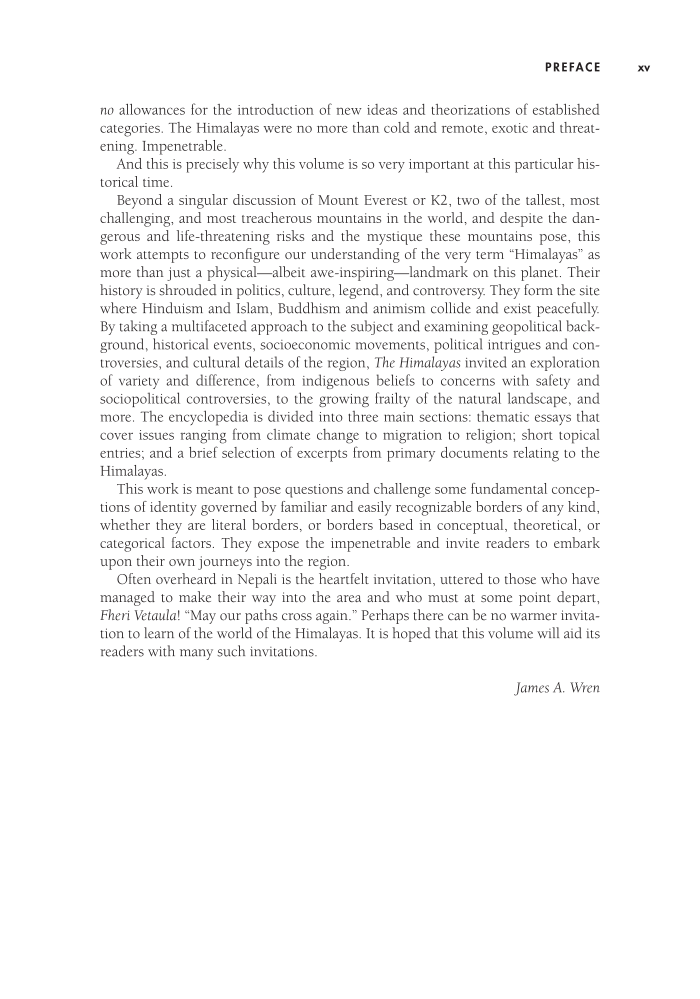xv Preface no allowances for the introduction of new ideas and theorizations of established categories. The Himalayas were no more than cold and remote, exotic and threat- ening. Impenetrable. And this is precisely why this volume is so very important at this particular his- torical time. Beyond a singular discussion of Mount Everest or K2, two of the tallest, most challenging, and most treacherous mountains in the world, and despite the dan- gerous and life-threatening risks and the mystique these mountains pose, this work attempts to reconfigure our understanding of the very term “Himalayas” as more than just a physical—albeit awe-inspiring—landmark on this planet. Their history is shrouded in politics, culture, legend, and controversy. They form the site where Hinduism and Islam, Buddhism and animism collide and exist peacefully. By taking a multifaceted approach to the subject and examining geopolitical back- ground, historical events, socioeconomic movements, political intrigues and con- troversies, and cultural details of the region, The Himalayas invited an exploration of variety and difference, from indigenous beliefs to concerns with safety and sociopolitical controversies, to the growing frailty of the natural landscape, and more. The encyclopedia is divided into three main sections: thematic essays that cover issues ranging from climate change to migration to religion short topical entries and a brief selection of excerpts from primary documents relating to the Himalayas. This work is meant to pose questions and challenge some fundamental concep- tions of identity governed by familiar and easily recognizable borders of any kind, whether they are literal borders, or borders based in conceptual, theoretical, or categorical factors. They expose the impenetrable and invite readers to embark upon their own journeys into the region. Often overheard in Nepali is the heartfelt invitation, uttered to those who have managed to make their way into the area and who must at some point depart, Fheri Vetaula! “May our paths cross again.” Perhaps there can be no warmer invita- tion to learn of the world of the Himalayas. It is hoped that this volume will aid its readers with many such invitations. James A. Wren
Document Details My Account Print multiple pages
Print
You have printed 0 times in the last 24 hours.
Your print count will reset on at .
You may print 0 more time(s) before then.
You may print a maximum of 0 pages at a time.







































































































































































































































































































































































